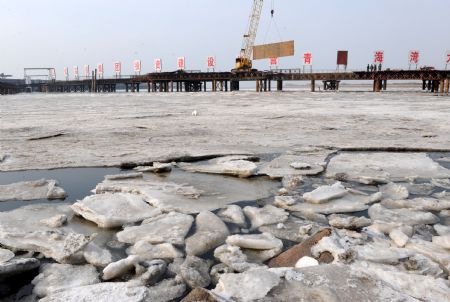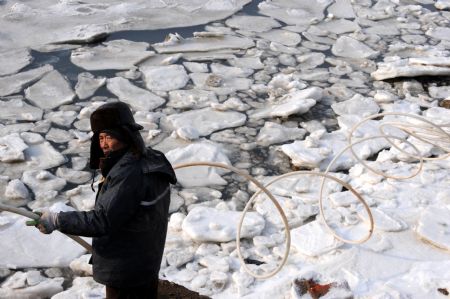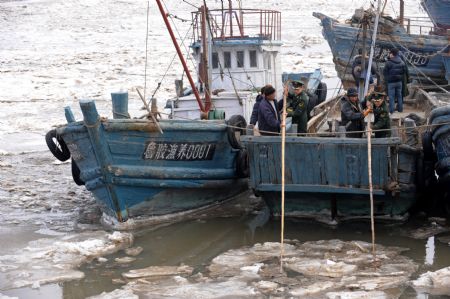E. China sees worst sea ice in 3 decades
 |
|
The under construction project of Jiaozhou Bay cross-ocean bridge is stuck by ice in Qingdao, east China's Shandong Province, Jan. 10, 2010. The worst sea ice of the last three decades freezes in Qingdao's coastal waters, according to the data released by the North China Sea Branch (NCSB) of the State Oceanic Administration on Friday. [Xinhua] |
Sea ice appeared last week along the coastline of the Bohai Sea and northern Yellow Sea as cold fronts pushed the temperature down to minus 10 degrees Celsius, said Guo Kecai, deputy general engineer of the North China Sea Branch (NCSB) of the State Oceanic Administration.
The outer edge of the ice sheets in the Liaodong Bay, Bohai Bay and northern Yellow Sea extended 60 nautical miles, 15.5 nautical miles and 20 nautical miles, respectively, according to the NCSB.
 |
|
A mariculturist breaks the ice on the sea in Jiaozhou, east China's Shandong Province, Jan. 10, 2010.[Xinhua] |
More than 200 fishing boats were frozen at a port in Dongying Village in the Jiaozhou Bay. Fishermen said the ice sheet could be20 cm to 30 cm thick.
In the waters near Liaodong Bay and Laizhou Bay, floating ice was reported in an area of 65 to 75 nautical miles, with ice measured more than 50 cm thick, threatening ship navigation, anchoring and operations at ports, Transport Minister Li Shenglin said Saturday.
 |
|
Police help move the vessels stuck by ice in Qingdao, east China's Shandong Province, Jan. 10, 2010.[Xinhua] |
The NCSB had strengthened monitoring on icing conditions and sent warnings to local residents and governments.
 0
0 






